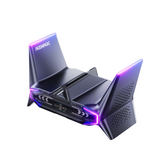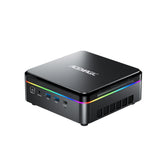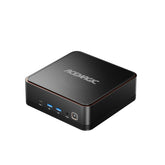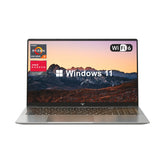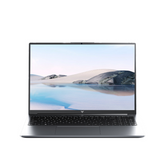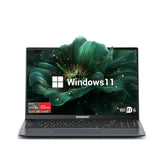How to Set Up Dual Monitors: A Step-by-Step Windows Guide

Adding a second monitor can revolutionize computer use. If you work with spreadsheets, edit video, have code to keep in check, or conduct virtual meetings, two monitors can reduce window switching and keep your workflow running more efficiently. This tutorial is all about dual-monitor setup on Windows properly, from checking hardware compatibility to tweaking display settings.
Benefits of Using Dual Monitors
Before describing the installation procedure, it is convenient to understand the reasons why everyone uses two or more monitors:
-
More Productivity: Files can be open side by side, or communication programs can be kept open while working on a task.
-
Efficient Task Management: Programs are left open without minimizing or changing windows.
-
Improved Concentration: Having different types of work on different screens makes the environment cleaner.
These advantages are concrete and measurable, especially in operations that handle data, media cutting, or processes with several steps.
Check Your Hardware Compatibility
1. Find Output Ports
Start by looking at the video output ports available on your computer. Common types include:
-
USB-C with Display Output
-
VGA (older computers)
A desktop machine may have a number of ports on the graphics card. Laptops might offer one or two. USB-C or docking stations might, in some cases, add extra displays.
2. Check Monitor Inputs
Monitors have compatible input jacks. If your monitor has HDMI but your computer is only DisplayPort, you will require an adapter or a conversion cable.
3. Graphics Card Capability
Most modern GPUs support at least two displays. To confirm, check your GPU’s specifications online or consult your device manual. Entry-level integrated graphics often handle dual monitors without issue. For three or more, dedicated GPUs are typically necessary.
Gather the Right Cables and Accessories
Once compatibility is confirmed, prepare the required cables. Match the port types between your monitor and computer. Use the following examples as a reference:
-
HDMI to HDMI
-
DisplayPort to DisplayPort
-
USB-C to DisplayPort or HDMI (active cables)
If there are not many physical outputs, employ USB-C docking stations or daisy-chainable monitors (DisplayPort MST).
Physical Location and Desk Arrangement
Position your monitors in their ultimate spot before they're plugged in:
-
Both monitors at eye level.
-
Sufficient space for keyboard and accessories.
-
Monitor height adjustability to prevent neck strain.
Monitor arms or stands help you achieve a more ergonomic position, especially on tiny desks.
Double Monitors Connection and Installation on Windows
Step 1: Connect the Monitors
-
Shut down your computer.
-
Plug in the monitors to their respective sources of power.
-
Use video cables to connect both monitors to your PC or laptop.
-
Power on the monitors and the computer.
Tip: Windows should automatically recognize the second monitor after booting up.
Step 2: Open Display Settings
-
Go to Start > Settings > System > Display. Open Windows display settings.
-
Scroll down to Rearrange your displays.
-
Click Identify to show numbers on all screens. These numbers correspond with their place in Windows.

Step 3: Rearrange Monitor Positions
In the settings panel, rearrange the monitor icons by dragging them to reflect the physical layout on your desk. If the left monitor is labeled "2" and the right one is "1" but your configuration is reversed, swap their position. Line the tops of each box up to avoid uneven cursor travel.
Step 4: Select Display Mode
In the Multiple displays section, select how you'd like Windows to utilize the second monitor:
-
Extend these displays (recommended): Combines both monitors into a single desktop.
-
Duplicate these displays: Duplicates the same information on both monitors.
-
Show only on 1/2: Utilizes one of the display devices that is connected.
Click Apply after selecting the mode. Confirm by clicking Keep changes.
Step 5: Set the Primary Display
-
Choose which monitor will be your main display. This is where the taskbar and Start menu appear.
-
Choose the display number you want to use.
-
Select Make this my main display.
Step 6: Change Resolution and Orientation
For every screen:
-
Click on the monitor icon.
-
Use the Display resolution dropdown to choose the native resolution of the monitor.
-
Use the Display orientation setting to rotate to landscape or portrait as needed.
Tip: Use the same resolutions whenever possible to provide text and interface size consistency across screens.

Optional Enhancements for Greater Workflow
There are a few features provided by Windows that can be used to make dual-monitor use more productive:
-
Taskbar Behavior: Under Display settings > Taskbar behaviors, choose to show the taskbar on all screens or only the primary one.
-
Window Snapping: Use keyboard shortcuts like Win + Left/Right to snap windows against screen edges.
-
Move Windows Quickly: Press Shift + Win + Left/Right Arrow to move a window between monitors.
-
Remember Window Locations: Under Display settings, enable Remember window locations based on monitor connection.
These options allow more flexibility in controlling window interaction across your workspace.
Troubleshooting Steps Most Commonly Employed
-
Monitor Not Detected: Go to Settings > System > Display > Multiple displays and click Detect. Check cable connections and try a different port if detection is not successful.
-
Mismatched Resolutions: Set each monitor individually to its recommended resolution. Employ mixed resolutions only as a last resort.
-
Unpredictable Cursor Movement: Check the screen layout in settings. Off-center positions often create erratic mouse movement.
-
One Video Output Choice Available: Use a USB-C to HDMI adapter or dock. As an alternative, consider a USB-to-HDMI external graphics adapter.
-
TV as Second Monitor Won't Show Image: Switch the refresh rate to 60Hz. Some TVs are not compatible with higher or variable refresh rates.
Three or More Displays
Dual monitor setups are adequate for most users, but a few professionals require more. If you're planning to add a third monitor:
-
Ensure that your GPU can handle more than two outputs.
-
Use MST (Multi-Stream Transport) when your DisplayPort is capable of daisy-chaining.
-
Choose a Mini PC or a desktop that comes with multiple video outputs, such as HDMI + DisplayPort + USB-C.
ACEMAGIC Mini PCs with Multi-Display Support
For users who prefer to have an efficient multi-monitor setup within a constrained form factor, ACEMAGIC Mini PCs offer advanced multi-display capabilities. Various models feature multiple output ports such as HDMI, DisplayPort, and USB-C with the ability to drive up to three screens. They are ideal for home offices, content creation stations, and general productivity workstations. The small footprint keeps the workspace clean, with performance-driven hardware allowing effortless multitasking.
Frequently Asked Questions (FAQs)
1. Am I able to use monitors of other manufacturers together?
Yes, you can use other manufacturers' monitors together. However, ensure that their resolution and input ports are compatible with your system.
2. How do I handle if my monitors are of different resolution or refresh rate?
Windows accommodates different resolutions and refresh rates for each monitor, but for a smooth experience, try to keep the same specs whenever possible.
3. Why won't my second monitor show up in settings?
Check that all cables are properly plugged in and that the monitor is on. Just press the Detect button in Display Settings.
4. Can I set my TV as one of the monitors?
Yes. Plug in with an HDMI cable, and make sure to change the input to the correct HDMI port on your TV.
5. I have just one video output—what should I do?
Use a USB-C to HDMI or DisplayPort adapter, or a docking station with more than one video output.
6. How do I adjust brightness for each screen separately?
Brightness adjustment varies with hardware in monitors. Use the physical monitor buttons or its software (if available) for adjusting brightness.
7. How do I have different wallpapers on multiple monitors?
Right-click the desktop, choose Personalize, and under Background settings, right-click a wallpaper and assign it to a particular monitor.
8. My mouse pointer is not going between screens correctly—why?
Your Windows monitor configuration might not match your actual setup. Go to Display Settings and rearrange the displays.
9. Will having dual monitors slow down my computer?
If you are not running graphically intensive programs, most computers will handle dual monitors just fine. Reductions in performance will occur with outdated gear or game installations.
10. Can I use a second monitor with my laptop?
Yes. Most laptops can utilize at least one external display through HDMI, USB-C, or a docking station.
Conclusion
Setting up dual monitors in Windows is an easy procedure if you understand your hardware and follow the right protocol. From understanding ports to siting displays and adjusting settings, each step of the process leads to a more productive computing experience. With correct configuration and slight adjustments, dual monitors can significantly improve how you work or interact with material on a daily basis.






